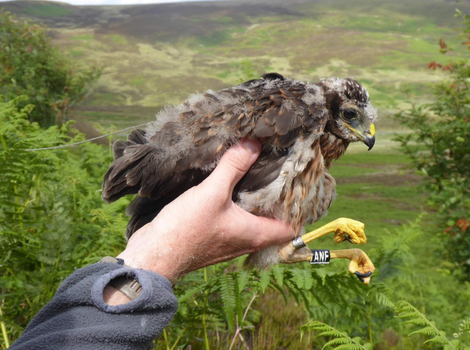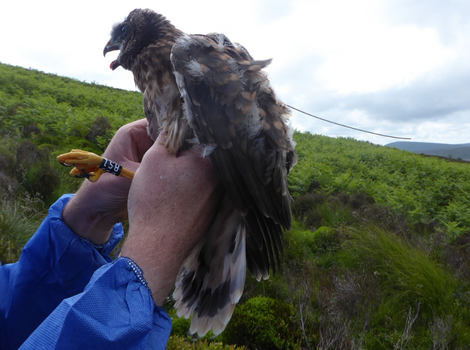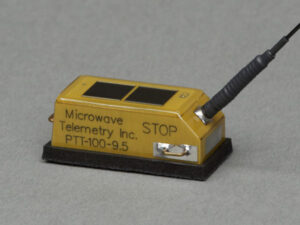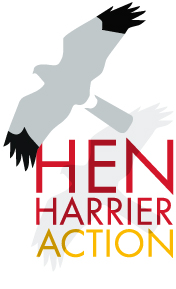
The Tiny Marvel of Technology That Tracks the Progress of Our Precious Hen Harriers
Thanks to the generosity of donations from our supporters, the charity currently has seven live satellite tagged Hen Harriers roaming the UK, and constant data updates from their tags help the RSPB Investigations Team to monitor their wellbeing.
Macha from the 2023 cohort, and Adar, Binbeal and Gilda from the 2024 cohort, have been joined this summer by four 2025-fledged young females – Circe, Clara, Frigg and Henrietta. Sadly, Frigg’s tag has stopped transmitting, but we still have seven precious birds with the potential to grow the UK’s meagre population of this iconic, and much persecuted, red-listed bird of prey.







Each tag was fitted to the fledgling bird at around 28-29 days after hatching, at their natal site, by licensed fieldworkers, most often from the RSPB and raptor study groups, after tireless observation of nesting sites and potential breeding behaviour. You can read more about their work in the field in another article – Satellite Tagging Hen Harriers – by our former Chair, Dr Kathleen Thomas.
Solar Powered Satellite Tags with Advanced Microelectronics

The satellite tags are manufactured by US company Microwave Telemetry Incorporated (MTI), based in Maryland. Since their founding in 1991, after they designed the first tag under 100g (and deploying it on a Bald Eagle in 1990), advances in miniaturisation and microelectronics have allowed them to continually reduce the size and weight of tags, opening up the possibility of tracking a much wider range of bird species.
The smallest tag now produced by MTI weighs less than 2g, allowing deployment on species like Terns and Sandpipers. Our Hen Harriers are fitted with 9.5g satellite tags, as it is important that the tag is no more than 3-4% of the bird’s adult weight. Males typically weigh 300-400g and females 400-600g, making the 9.5g tag ideal and unlikely to interfere with the bird’s natural behaviour.
Most of us are aware that satellite tags transmit location data, but not necessarily how it is done. The batteries on our birds’ tags are solar-powered, and are programmable to allow variable charging and transmitting periods, weather permitting. Of course, the UK winter days don’t always provide enough sunlight to fully charge the tags; during the gloomy depths of last winter we had very little data from Macha in North Yorkshire for a while.
Invaluable Data from a Sophisticated Array of Satellites

The data is transmitted to one of 5 legacy Argos satellites and 21 new Kinéis nanosatellites continuously orbiting the Earth. This sophisticated array of satellites is widely used by researchers and NGOs to monitor all kinds of wildlife and marine life, and to track livestock, pollution, ice flows and water consumption, amongst other things.
For birdlife, thanks to the continuing advances in tag miniaturisation, the Argos system can provide tracking data for almost 3,500 different species of birds. Some of the projects tracking bird species with the Argos satellite service have included Montagu’s Harriers, Eagle Owls, Red Phalaropes and Emperor Penguins.

Stop, No Malfunction
According to RSPB Investigations Intelligence Officer Robin Lyon Sinclair, the data can very quickly raise the alarm about a bird’s wellbeing. “If we see 48 hours or more of complete inactivity, we know that there is likely to be a problem, and we can pinpoint the location for a field investigation in the area.”
And it’s not likely to be a malfunction. According to Robin, of the 250 tags that the team have deployed over more than a decade, only 4 have ever malfunctioned. “That’s why our shorthand for these incidents is a ‘Stop, No Malfunction’ description,” he adds.
Sadly, many of the suspicious disappearances of Hen Harriers occur on or near grouse moors, and in some cases the criminals go to great lengths to try to deceive or outwit the teams sent to search for a downed satellite tagged bird.
In the Spring of 2021, a tag fitted to a young female Hen Harrier named Asta started to behave erratically. Her satellite tag signal went offline near a driven grouse moor in County Durham, but then began transmitting again almost 30km away and at a much lower altitude. Natural England launched a search and found the tag in April, now attached to a dead Carrion Crow. Experts concluded that the tag and harness could only have been refitted through human intervention, by removing the wings of the Hen Harrier.
There have also been at least two cases involving satellite tags fitted to Golden Eagles where in one instance it had been dumped in the North Sea – the tag data revealed a journey along the Edinburgh City Bypass to North Berwick – and in another encased in lead sheeting with the antenna cut off and thrown into a river at a beaty spot.
A Typical Hen Harrier Lifespan of Just 121 Days
But these satellite tags are manufactured to a very robust specification and guaranteed for three years. Indeed, one male Bearded Vulture in the Pyrenees has been tracked for over 14 years now from the original solar-powered tag! And if one is retrieved in the field, it can often be re-used the next year.

Sadly, although the average lifespan of a Hen Harrier should be 7 years – and the oldest known was aged 15 years – many UK Hen Harriers live only a fraction of that time because of illegal persecution. A scientific study of 148 tracked UK Hen Harriers, published in the journal Biological Conservation in 2023, concluded that the typical lifespan was just 121 days, and that only 17% survived the first year, not even long enough to find a partner and breed. The risk of illegal killing increased significantly on or near grouse moor habitats.
Deterring Wildlife Crime
There is some good news, though. Covert footage filmed by RSPB Investigations, and broadcast on Channel 4 News in October 2024, revealed that wildlife criminals intent on illegally shooting protected species on a Northern grouse moor, including Buzzards, Ravens and Hen Harriers, were discouraged from killing a Hen Harrier by the presence of a satellite tag on the bird. The tags are acting as a deterrent to wildlife crime.
What’s more, the Hen Harrier Task Force, formed last year as part of the National Wildlife Crime Unit, is now deploying specialist tactics, including detection dogs trained to sniff out satellite tags and specially adapted aerial drones capable of pinpointing tags, even in the remote and unforgiving upland landscapes where much of this criminal activity still persists.


Bringing More Criminals to Justice
The crucial factor, though, as anyone familiar with TV crime dramas will tell you, is to act quickly. To get resources in the field, to launch an appeal for information as soon as the data suggests that the tag has stopped transmitting.
With the new funds raised earlier this year by Hen Harrier Action supporters to cover the training and deployment of wildlife crime detection dogs like Henry – recently awarded an Animal Action Award by the International Fund for Animal Welfare (IFAW) – for the National Wildlife Crime Unit, we hope that field investigations can be conducted more rapidly, and more criminals can be brought to justice, thanks to the crucial data provided by this tiny technological marvel – the satellite tag.

